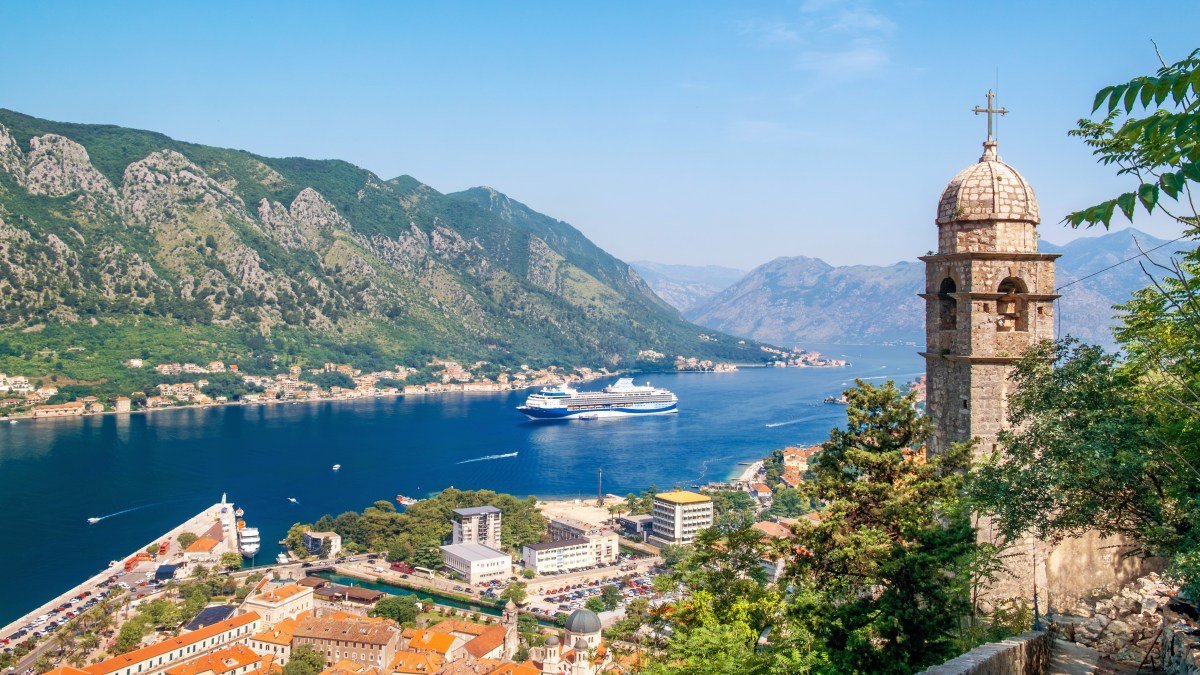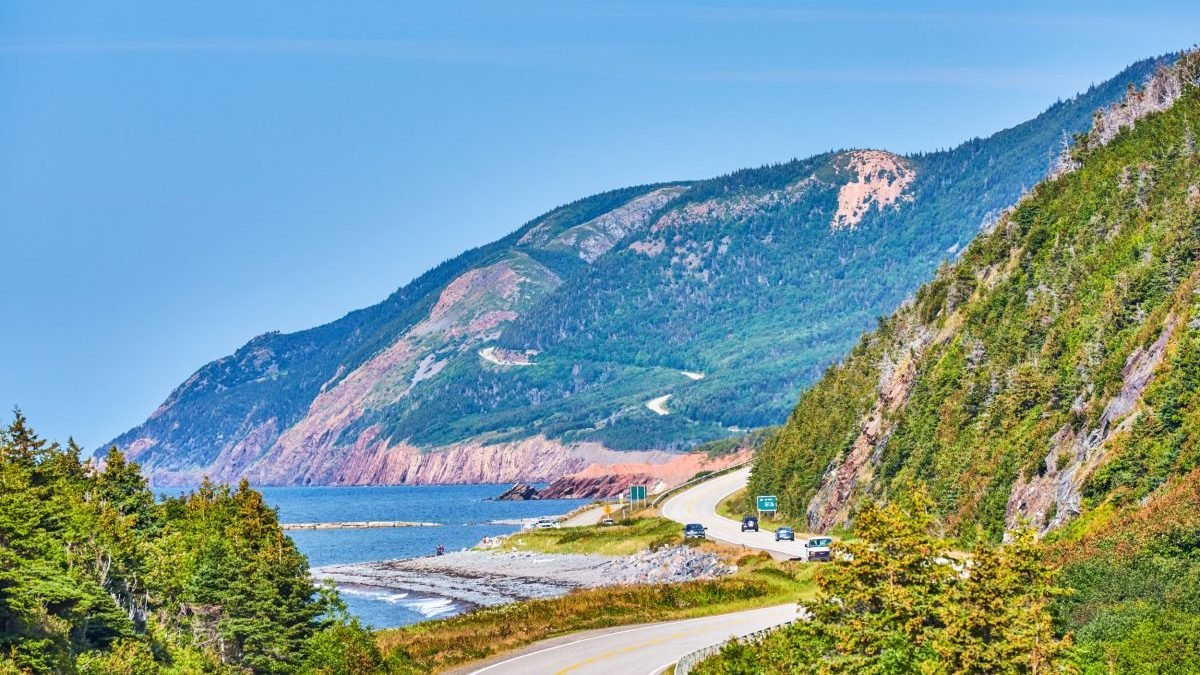Travel Journals
11 of the best all-inclusive Mediterranean cruises

Whether you fancy cava on tap as you sail around Spain or a gelato a day on an Italian itinerary, an all-inclusive cruise means you’ll want for nothing on a Mediterranean voyage. Without a final bill looming at the end of the cruise, you can relax and really enjoy your holiday, sampling new cuisines in the on-board restaurants, celebrating sail-away with a glass of fizz or even taking it easy by ordering breakfast on room service. Every cruise line differs so always check the details carefully before booking to be sure the fare includes all you’ll need. Some may not cover important extras like gratuities or wi-fi, while pricier packages often throw in everything from laundry to shore excursions, but you might not want to pay for inclusions you won’t need. Here’s our pick of the best all-inclusive Mediterranean cruises.
This article contains affiliate links, which may earn us revenue
1. Explora Journeys
MSC Explora 1
IVAN SARFATTI
Best for high-end suites
There’s no chance of being stuck in a pokey state room with Explora Journeys, the new line from MSC Group that launched its first ship, MSC Explora 1, in August 2023. Explora 2 is set to follow in summer 2024. All suites are oceanfront, with floor-to-ceiling windows, a walk-in wardrobe and a terrace with a daybed, plus nice-to-have extras including a Dyson hairdryer, Frette bed linen and Illy espresso machine. A stocked minibar, thermal spa access, gratuities, fitness programmes and wi-fi are all included, while guests have nine dining options including room service, a gelateria and creperie, a European steakhouse and an immersive pan-Asian restaurant with its own sake sommelier. Itineraries include a seven-night voyage from Lanzarote to Barcelona and a more in-depth 14-night tour of the Adriatic’s most beautiful ports including Rovinj in Croatia and Nydri on the Greek island of Lefkada.
2. Silversea
The Greek town of Nafplio
GETTY IMAGES
Best for butler service
There’s no need to lift a finger when cruising with Silversea. Its lavish all-inclusive package includes a personal butler for each suite who can help out with everything from filling your bath to cleaning your sunglasses. The fare also includes a complimentary shore excursion each day, champagne on tap, 24-hour room service, a chauffeur-driven car from your home and hotel nights where needed before or after the cruise. Mediterranean itineraries include seven-night round trips from either Athens or Fusina (Venice), calling at ports including the Croatian island of Hvar and Nafplion in Greece, where you’ll find ancient ruins, rustic tavernas and quiet beaches.
3. Celestyal Cruises
Enjoy cooking classes and traditional food on a Celestyal cruise
GETTY IMAGES
Best for paying only for what you want
There’s no point splurging on an all-bells-and-whistles-inclusive voyage if you barely drink, don’t need wi-fi and don’t fancy visiting speciality restaurants. New for 2024, Greek cruise line Celestyal offers two all-inclusive packages for maximum value. The Celestyal Experience fare includes complimentary dining, drinks with meals, entertainment and discounts on shore excursions, while the Plus+ Experience also includes premium drinks, speciality dining and wi-fi. Optional shore excursions encourage guests to get to know the real Greece — they include a cooking class in a local home in Mykonos and pottery-making and a meze lunch in Rhodes.
Times Holidays
4. Fred Olsen Cruise Lines
Stargazing sessions are a feature of Fred Olsen cruises
Best for on-board activities
Great value all-inclusive fares from Fred Olsen don’t skimp on entertainment options, with guest speakers, chart-reading sessions with the captain, cooking classes and even stargazing sessions over a hot toddy. There’s also a house band, dance teachers, an art studio and a theatre company on each ship. Fares include all-day room service, afternoon tea and à la carte dinners — alcohol is extra, though reasonable packages can be added from £24.99 per person per night. Med itineraries sail from the UK so tend to be at least two weeks long, calling at ports including La Goulette in Tunisia and Gibraltar with its Moorish baths, cable car and the only wild monkeys in Europe.
5. Seabourn
The Club on Seabourn Ovation
ERIC LAIGNEL
Best for luxury
Expect to be pampered when you sail on any of Seabourn’s seven ships, all of which have a private yacht feel, with personal service and sumptuous extras included as standard. Fine wines, premium spirits, a bespoke in-suite bar, wi-fi, dining in any venue at any time and even unlimited caviar are all thrown in. Itineraries are more original than most too, calling at lesser-visited Med ports including pastel-coloured Greek fishing town Gythio, Andalusia’s Almeria and the sleepy Greek island of Patmos, where St John is believed to have written the Book of Revelation.
6. Marella
Park Guell in Barcelona
ALAMY
Best for regional UK departures
The cost of travelling to a London airport can be an unwelcome extra on top of many cruise fares. Marella, which is part of Tui, includes departures from several UK regional airports, so it’s easy to find a more convenient alternative. Cruise fares also cover luggage, transfers to the ship, selected drinks including certain spirits and house wine, gratuities and several informal dining options. Good-value Med itineraries include all the big-name stops including Barcelona, Civitavecchia for Rome and Malaga.
• Best budget cruises in the Mediterranean
• Best small-ship Mediterranean cruises
7. P&O Cruises
P&O’s gala night dinner is created by Marco Pierre White
Best for non-drinkers
If you prefer a juice to a gin and tonic, all-inclusive cruise fares can prove expensive. P&O’s package includes coach transfers, dining at a range of restaurants, room service breakfast, plenty of entertainment and a formal five-course gala night dinner created by celebrity chef Marco Pierre White. A choice of four drinks packages can be added including one for soft drinks only and another alcohol-free bundle including Costa coffee, non-alcoholic beer and wine and a range of mocktails, so you can toast your arrival in must-see ports including Genoa, Dubrovnik and Santorini.
8. Princess Cruises
Open-air movies with popcorn aboard a Princess cruise
Best for all-day dining
There’s no chance of going hungry on a Princess cruise. Meals are all covered but there are also sweet snacks aplenty on board for no extra cost, including complimentary soft serve ice cream on deck, popcorn dished out during open-air movies and freshly baked cookies available throughout the ship. Opt for a Princess Plus package — an extra £50 per day — and wi-fi, gratuities, drinks up to $15 (about £12), extra meals and other treats are included too. Med itineraries sail from Barcelona, Civitavecchia (Rome) or Piraeus (Athens) and tick off all the major ports along the way including Mykonos, Sicily and Marseilles.
9. Azamara
The Greek town of Ermoupoli
GETTY IMAGES
Best for maximum shore time
All Azamara’s four ships hold around 700 passengers each so you can expect a boutique feel on board, plus more varied Med itineraries featuring smaller ports. Late-evening departures also mean plenty of time to explore the cobbled streets and shaded squares of Ermoupoli in Greece or the postcard-pretty harbour of Kotor in Montenegro. Back on board, room service, gratuities, self-service laundry, excellent food and selected alcoholic drinks are included in the standard fare, as is a weekly alfresco White Night party with entertainment, cocktails and an elaborate buffet dinner.
10. Scenic Ocean Cruises
Guests on a Scenic cruise can take a kayak trip
Best for inclusions
You’ll struggle to find something to spend money on once you board a Scenic ship, unless you fancy a trip on its helicopter. Its all-inclusive package covers almost everything you can think of including the use of waterskis and kayaks, room service, self-service laundry, wi-fi and cooking classes that reflect the area the ship is travelling through. Med itineraries are a good mix of the bigger must-visit ports and underrated spots including Porto Santo Stefano in Tuscany and the French town of Collioure, once popular with artists such as Dali, Picasso and Matisse.
11. Regent Seven Seas
Regent Seven Seas cruises are focused on food
STEPHEN BEAUDET
Best for a five-star hotel feel
From its chic spas to the palatial suites, a Regent Seven Seas cruise feels more like staying in a top hotel. Every fare is all-inclusive and has every detail covered, including unlimited wi-fi, laundry, a stocked minibar, shore excursions and a pre-cruise hotel stay. Foodies are particularly spoiled with a range of chef-led shore excursions available for an extra charge, including a market tour and tapas meal in Bilbao, a foraging tour and on-board cooking class in Corfu, and lunch at a two-Michelin-star restaurant in Barcelona — plus a peek in the kitchens.
• Best eastern Mediterranean cruises
• Best 14-day Mediterranean cruises
Times Holidays
Travel Journals
Blue Ridge Parkway named one of America's best scenic drives – WCNC
Travel Journals
A road trip on Ireland’s rugged northern coast, where the food is as good as the views

House martins and swallows are our constant companions, whether snapping up fluttering mayflies in the car park of Glencar Waterfall during a downpour or swooping from the eaves of The Shandon Hotel that overlooks Marble Hill Strand beach in Donegal, where linen-coloured sand slips into grey-green ocean.
It might only have celebrated its 10th official birthday in 2024 but Ireland’s 2,500km (1,550-mile) Wild Atlantic Highway has been used by generations of these nippy little migratory birds, who fly from the Sahara to spend their summers in the UK and Ireland.
The clever things know about Northern Ireland’s Causeway Coastal Route too.
Aside from the 60-million-year-old natural geometrical marvel that is Giant’s Causeway, this 193km stretch of raggedy, bewitching coastline, which starts in Belfast and ends in Derry, often gets lopped off road trips. But no more.
As part of the Shared Island initiative, which “aims to harness the full potential of the Good Friday Agreement to enhance cooperation, connection and mutual understanding on the island”, Tourism Northern Ireland and Fáilte Ireland have teamed up to remind visitors that once you hit the end of the Wild Atlantic Way, the sea has not run its course, the cliffs do not peter out and the Guinness really does not dry up.
Travel Journals
The laid-back ocean playground with coastal road trips and fresh shellfish

Less than a seven-hour flight from the UK, this maritime province in Atlantic Canada makes for a refreshing summer road trip
I love the office view I have,” said Kinnon, smiling beneath his baseball cap as he squished in beside me to guide his rigid inflatable boat out of Ingonish Harbour and into the chilly waters off Nova Scotia.
It was definitely better than my office view in London on a glorious June day in eastern Canada. A majestic sea eagle wheeled above our heads, a puffin bobbed about beside the boat and – in the distance – sleek gannets plunged down in search of fish.
Lobster fishermen methodically pulled up pots, an action repeated up to 275 times a day during their short season. I watched one crew take seven of the crustaceans from a single pot, throwing back another 13 that were too small or carrying eggs.
Looming behind them were the pine-covered cliffs of a finger-like peninsula that juts out between two sweeping bays, where the previous day we had hiked a woodland trail.
Now we were searching for whales. “Can you smell that: stinky minke?” asked Kinnon as a stench like rotting fish and cabbage wafted over the water.
Grey backs arced through the waves to gasps of delight from my fellow passengers. The mammals disappeared into the deep, before popping back up in different places around our little boat.
Kinnon told us about spotting killer whales. “I love seeing them. But they eat these guys, so I’m a bit torn over their appearances.”
We saw a few more minke before powering back to the harbour. My wife and I had chosen Nova Scotia for a road trip on something of a whim, lured by its relative proximity to the UK, compared with most of North America (a less than seven-hour flight) and its Celtic heritage. It has the largest Gaelic-speaking community outside Scotland.
Our trip began in Halifax, the province’s fast-growing – but chilled out – capital. Its bustling boardwalk, stretching almost three miles along the city’s waterfront, is studded with bars, restaurants and ice-cream parlours.
The Maritime Museum of the Atlantic grabs attention with its Titanic artefacts – reflecting how 150 of the victims recovered from the disaster were laid to rest in three of the city’s cemeteries.
Yet I found myself unexpectedly moved at the other end of the boardwalk, by the Canadian Museum of Immigration.
It is located at Pier 21, where more than 1.5 million people landed during the past century in search of new lives. The exhibits gave a glimpse into the huge challenges – and discrimination, at times – facing the waves of refugees, orphans and war brides flowing through.
The impact was underlined by handwritten notes from visitors. One woman stated she was there on her 50th birthday to honour her Italian father, adding that he never forgot his life-changing journey and would proudly tell her of his arrival at Pier 21.
Canada’s modern role as a nation built on migration was underlined. “I thank my parents for their love and sacrifices for me,” wrote one Asian man. “Also Canadians for their welcoming generosity.”
A Ukrainian family who arrived two years ago thanked Halifax for embracing them with its “ocean life” and “green lawns”, declaring that the region “took our hearts” by reminding them of the Black Sea and Carpathian mountains they fled due to war.
Nova Scotia has 8,300 miles of coastline and you’re never more than 50 miles from the sea, so this is a land of lighthouses and seafood. As we headed north to Advocate Harbour, we found its roads to be uncrowded (and Canadians must be among the planet’s politest drivers).
This drive took us past the Bay of Fundy, with tidal bore rafting that is like a muddy and wet rollercoaster, and weird “Flower Pot Rocks” – pillars of sandstone carved by fiercely-churning tides, topped with clumps of trees.
We stayed at Wild Caraway, a restaurant with rooms run by a friendly young couple called Andrew and Fiona. The vibe was informal. But the food, often foraged locally, was inventive: fiddleheads – furled fronds of ferns – with balsam fir and lemon were followed by halibut and asparagus in chive sauce.
A superb breakfast, delivered to our cabin, needed to be walked off on nearby beaches fringed with driftwood and devoid of people. Later, a “seacuterie” platter arrived with potted prawns and rollmop herring, which we washed down with beers sitting by the fire pit in the yard as dusk descended.
We drove hundreds of miles, snaking through a forested wilderness landscape filled with bears, moose and raccoons in this underpopulated slice of Canada that sits on similar latitude to southern France (and Nova Scotia can also boast of producing some fine wines).
We took a detour to Arisaig – a lobster port named after the Scottish highland village that neighbours my wife’s home town of Mallaig.
The Cabot Trail – a highway loop around Cape Breton, famed for its hilly twists and steep turns – was gentler than anticipated, despite often-impressive views.
Chéticamp was a fun stop with its folk-art feel and French speakers, a reminder of how the French and English tussled over Nova Scotia for more than a century on terrain originally inhabited by the Mi’kmaq people.
I feared the historic port of Lunenburg, a World Heritage Site, might be a tourist trap – but it turned out to be delightful.
Finally, we drove back to Halifax for a blowout at Drift, a striking harbour-side restaurant, before bedding down in the casual luxury of the Muir Hotel ahead of our hop home over swirling Atlantic seas that define this laid-back corner of Canada.
Getting there
Air Canada flies to Halifax from Heathrow, while WestJet flies from Edinburgh.Staying there
The Muir Hotel in Halifax has doubles from C$600/£329 per night.Wild Caraway Restaurant & Rooms, Advocate Harbour, has doubles from C$188/£103 and cottages from C$313/£171.
More information
The writer travelled as a guest of Tourism Nova Scotia.
canada.ca/en
-

 Brand Stories2 weeks ago
Brand Stories2 weeks agoBloom Hotels: A Modern Vision of Hospitality Redefining Travel
-

 Brand Stories2 weeks ago
Brand Stories2 weeks agoCheQin.ai sets a new standard for hotel booking with its AI capabilities: empowering travellers to bargain, choose the best, and book with clarity.
-

 Destinations & Things To Do2 weeks ago
Destinations & Things To Do2 weeks agoUntouched Destinations: Stunning Hidden Gems You Must Visit
-

 Destinations & Things To Do2 weeks ago
Destinations & Things To Do2 weeks agoThis Hidden Beach in India Glows at Night-But Only in One Secret Season
-

 AI in Travel2 weeks ago
AI in Travel2 weeks agoAI Travel Revolution: Must-Have Guide to the Best Experience
-

 Brand Stories1 month ago
Brand Stories1 month agoVoice AI Startup ElevenLabs Plans to Add Hubs Around the World
-

 Brand Stories4 weeks ago
Brand Stories4 weeks agoHow Elon Musk’s rogue Grok chatbot became a cautionary AI tale
-

 Brand Stories2 weeks ago
Brand Stories2 weeks agoContactless Hospitality: Why Remote Management Technology Is Key to Seamless Guest Experiences
-

 Asia Travel Pulse1 month ago
Asia Travel Pulse1 month agoLooking For Adventure In Asia? Here Are 7 Epic Destinations You Need To Experience At Least Once – Zee News
-

 AI in Travel1 month ago
AI in Travel1 month ago‘Will AI take my job?’ A trip to a Beijing fortune-telling bar to see what lies ahead | China

